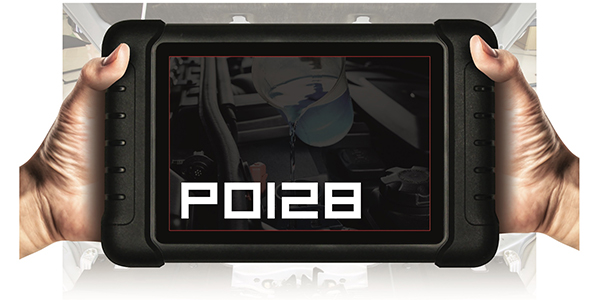
The Code Reader takes common DTCs, breaks down when and why they occur and looks at symptoms and causes to help you make an accurate diagnosis.
Diagnostic Trouble Code:
P0128 Coolant Temperature Too Low or Faulty Coolant Thermostat
No time to read this article? Listen to it instead!
Listen to “P0128 – Coolant Temperature Too Low or Faulty Coolant Thermostat” on Spreaker.
When:
DTC P0128 is stored when the control unit recognizes that the engine does not reach operating temperature within a predetermined amount of time.
Why:
When an engine is cold, emissions are high. Until completely warmed up to operating temperature, the engine runs rich for driveability and the catalytic converter(s) will not operate at their maximum efficiency. It is critical for an engine to reach operating temperature as quickly as possible. The fuel management system is strategically programmed to decrease warm up time, resulting in decreased emissions and the control unit monitors the engine temperature and warm-up time to a make sure it falls within expected parameters.
More to Know:
Coolant temperature is monitored by a sensor located before the thermostat, and since the thermostat is the primary control for engine temperature, standard logic points to it as a possible cause of the problem. You may also see this code described as “coolant temperature below regulating temperature,” but regardless of the description and the likelihood of a bad thermostat, a complete diagnosis should always be performed.
Symptoms:
In most cases the customer will not experience a driveability problem. Sometimes the temperature gauge will still read normal and the only customer concern will be the illuminated MIL. In other cases, the temperature gauge may read low or heater output may be diminished.
Diagnosis:
In addition to thermostat operation, all aspects of the cooling system should be checked, including coolant concentration and level and cooling fan operation. In calculating warm-up time, the control unit factors intake air temperature, coolant temperature, vehicle run time and vehicle speed, so don’t overlook contributing factors.
Before You Begin:
Always look for manufacturer information and TSBs. As with all computer-related diagnostics, the possibility of reprogramming or an electrical problem exists. Manufacturer information can save you a lot of time and trouble. TS













